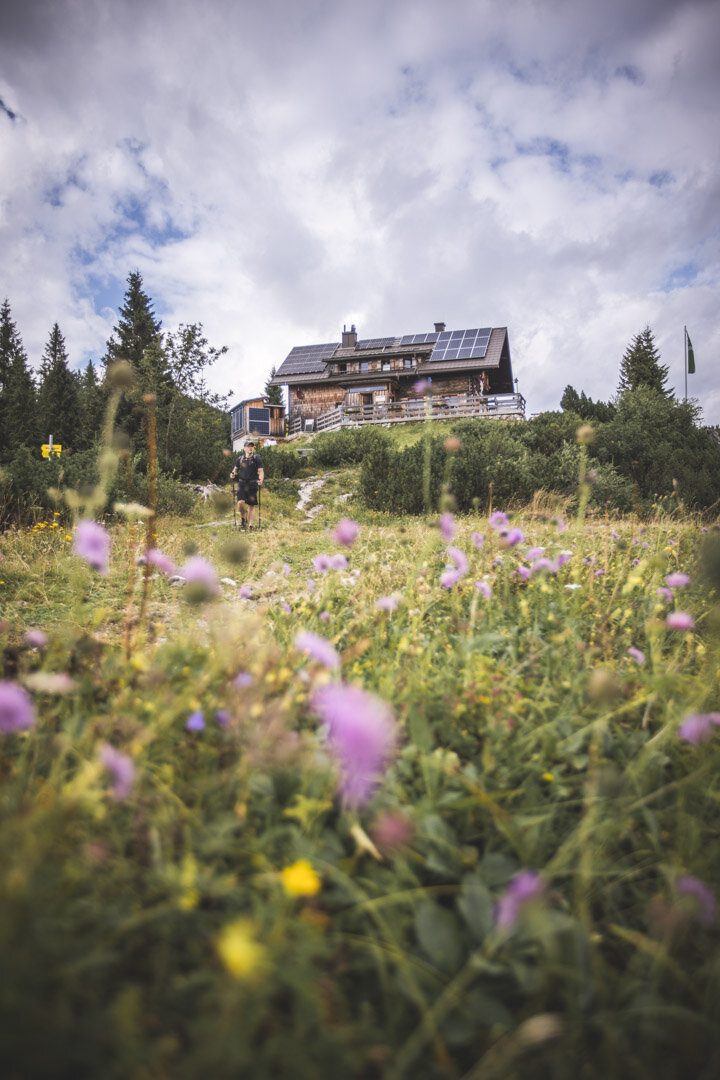Contact
Where you get all information!
Information & Booking Headquarters
SALZKAMMERGUT TOURISTIK GmbH
Götzstraße 12
4820 Bad Ischl
Österreich
Tel.: +43 (0)6132/24 000-73
Fax: +43 (0)6132/24 000-4670
rundwanderweg@salzkammergut.co.at
www.salzkammergut.co.at
Central Information Resource
Urlaubsregion Schladming-Dachstein
Ramsauerstraße 756
8970 Schladming
Österreich
Tel.: +43 (0)3687/23310
Fax: +43 (0)3687/23232
info@schladming-dachstein.at
www.schladming-dachstein.at
Requirements & General Information
During the tour around the Dachstein you will be in high alpine terrain. Appropriate mountain equipment as well as stamina are therefore required.
The necessary equipment includes: hiking boots, functional clothing, backpack, enough water and food, rain and sun protection, first aid kit, mobile phone, possibly hiking poles, . . .
The daily hiking time is about 5 - 8 hours. The paths are well signposted but markings may be obscured by remaining snow. Maps and the Dachstein hiking book must therefore be carried along. Accompaniment by an experienced hiking guide on request!
Please note that the execution of the tours depends on the weather but there are always alternative hiking possibilities!
Safty first
During this tour of the Dachstein, hikers make their way through many altitude zones, which means the daily demands will also vary correspondingly.
- Alpine trails ranging from 1,400 - 2,100 meters above sea level
- Glacier hike from 2,700 - 2,100 meters
- Remote paths across high-alpine pastures, between 1,700 - 1,000 m
- Flat valley hikes alongside streams and rivers
Rapid changes in weather, quick drops in temperature, lightning, fog and fields of snow are real dangers and demand you react appropriately when you are out on trail. Your hosts at alpine chalets and huts along the way have invaluable experience, and know the mountains like the backs of their hands, and they can give you vital tips about the weather and trail conditions. Inadequate equipment, overestimating your own abilities, recklessness, poor conditions and misreading the situation can all lead to critical situations. Glaciers should only be traversed on marked routes.
Hiking alpine trails demands concentration and discipline, good trekking or mountaineering shoes, and detailed planning. How long will the stage take, where is the next stopping point, what is the elevation change, and are there potential refreshment stops along the way ? And: "treading carefully". Especially when you cross snow fields (which could potentially be undermined) and avalanche cones, caution is what it's all about. Danger is always involved in crossing steep fields of snow. Especially in early summer and in mountainside locations, crossing in the early morning hours (when the snow might still be hard) can be dangerous. Tying on to a rope, ice axes, good poles and sturdy shoes are indispensible in those situations.
Gear
A backpack is a must and, because some of the routes lie in high-alpine terrain, a cap, gloves, a good anorak and overpants have to be a part of your basic gear. Good, waterproof shoes, sunglasses, sun block and plenty to drink are all important. A flashlight, maps, knife and a small first-aid kit are not a luxury either. Also helpful: magnesium tablets to enrich your water and help prevent cramps.
If something happens
Rule No.1 – keep a cool head. A mobile phone can be a major help - for alpine emergencies dial 140 anywhere in Austria. Once alpine emergency responders have been notified, dispatch will evaluate the situation and send out the appropriate mountain rescue personnel. Dial 112 – this number is for the Europe-wide GSM emergency call service, provided as an SOS function on many devices. Once you dial the number, you are connected to the closest response center - in Austria this will be the police emergency dispatch center - and your call will be treated as a top priority. Leave your mobile phone turned on!
In thunderstorms
Mountaintops, gorges, as well as trails where you rely on safety cables, are definitely to be avoided. In general, thunderstorms occur in the afternoon, so, if weather conditions are favorable for storms to build, begin your tour earlier! At higher elevations, rapidly changing weather can mean rain, snow and hail! That's when the quality of your gear really comes into play.
Important
There are no charges for emergency calls!
Use common sense and keep your wits about you, this is not the time to experiment. And be sure to keep a close eye on trail markings!


